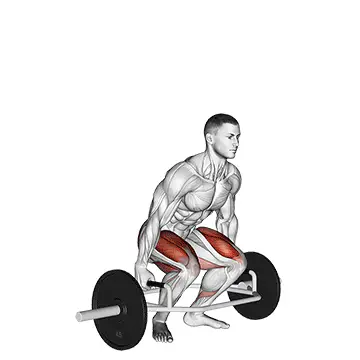Seated Single Leg Hamstring Stretch

Muscles Involved
The seated single leg hamstring stretch primarily targets the hamstrings, which are a group of muscles located at the back of the thigh. This exercise also engages the gluteus maximus and the calves to a lesser extent. Secondary muscles include the lower back and hip flexors, as they assist in stabilizing the body during the stretch.
Top Mistakes
- Rounding the back: Failing to maintain a neutral spine can lead to ineffective stretching and potential injury.
- Overreaching: Going too deep into the stretch may result in discomfort or strain, especially if flexibility is limited.
- Not breathing: Holding your breath while stretching can create tension and inhibit relaxation of the muscles.
Execution Tips
- Begin by sitting on the floor with one leg extended straight out in front of you and the other leg bent, with the foot resting against the inner thigh of the extended leg.
- Engage your core slightly and keep your back straight to avoid rounding during the stretch.
- Inhale deeply and as you exhale, gently reach towards your toes of the extended leg while keeping the shoulders relaxed.
- Stop when you feel a comfortable stretch in the hamstring and hold this position for 15-30 seconds.
- Make sure to switch legs and perform the stretch on the opposite side as well.
Workouts
The seated single leg hamstring stretch can be effectively incorporated into both warm-up and cool-down routines. As part of a dynamic warm-up, perform this stretch after 5-10 minutes of light aerobic activity to promote flexibility. Aim for 2-3 sets of holding each stretch for 15-30 seconds on each leg. For enhanced flexibility, this exercise can also be included in a dedicated stretching session post-workout, along with complementary exercises such as quad stretches and calf stretches for balanced muscle engagement.
Conclusion
The seated single leg hamstring stretch is an essential exercise for promoting flexibility in the hamstrings and preventing injury. Regular practice can enhance overall mobility, improve athletic performance, and offer relief from tightness associated with prolonged sitting. Incorporating this stretch into a consistent fitness routine encourages optimal muscle function and contributes to better posture and alignment.



